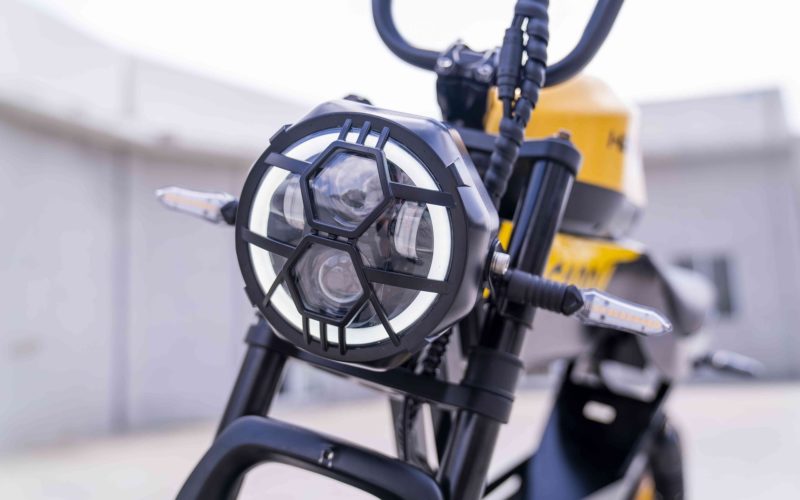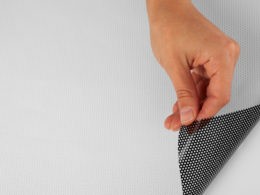Winter transforms the surroundings into a snow-covered paradise, perfect for adventure seekers. Using a winter off-road electric bike is an exciting way to explore this snowy wonderland. These bikes are not just about mobility; they offer thrilling journeys across serene, snow-covered landscapes. This guide outlines the fundamentals of winter electric biking, providing valuable tips to make your rides enjoyable and safe.
Understanding Winter Off-Road Electric Bikes
Winter electric bikes for adults are designed to handle snow, ice, and rough terrain. Features like thick tires, powerful motors, and long-lasting batteries make them ideal for winter outings. Let’s take a closer look at these key elements:
1. Thick Tires for Stability
A winter electric bike’s large tires — often referred to as “fat tires” — are its most noticeable feature. Typically, three to four inches wide, these tires provide a larger surface area, ensuring stability and traction on snowy and icy paths. They help you ride smoothly and safely, even on slippery terrain.
2. Battery and Motor Power
The motor and battery are the core components of your electric bike. Winter rides demand a powerful battery because cold temperatures can drain batteries more quickly. To avoid a dead battery mid-ride, choose a bike with a larger capacity.
A mid-drive motor, positioned near the pedals, delivers the power needed to tackle deep snow and steep hills with ease.
Tips for Riding an Electric Bike in Winter
Winter biking requires some adjustments to your usual riding style. Here’s how to make the most of your snow-filled adventures:
1. Begin Gently
When riding in snow, start slow. Snow and ice make surfaces slippery, so take time to adapt to how the bike handles. Ride cautiously on icy roads, as stopping takes longer than on dry surfaces.
2. Adjust Tire Pressure
Lowering the air pressure in your bike’s tires improves traction on snow by increasing grip. However, avoid over-deflating, as this can damage the rims or tires.
3. Maintain Momentum
Consistent speed is crucial, especially when climbing hills. Sudden power surges can cause your tires to lose traction and spin out. Losing momentum on a hill can make it difficult to start moving again.
Winter Maintenance for Electric Bicycles
Proper care is essential for your bike during winter. Snow, ice, and road salt can cause damage if not addressed. Follow these maintenance tips to keep your bike in top condition:
1. Battery Care
After each ride, bring your battery indoors to keep it warm. Charging a cold or frozen battery can harm it and reduce its lifespan.
If you’re not using your electric motorcycle for a while, store the battery at about half charge to maintain its health.
2. Clean Your Bike After Every Ride
Snow, salt, and dirt can damage your bike. Clean it thoroughly after each ride, washing off debris and drying it completely to prevent rust or freezing.
Gear Up for Winter Rides
Your clothing and safety gear are just as important as your bike. Here’s what you’ll need:
1. Layer Up to Stay Warm
Wear multiple layers and choose water-resistant jackets and pants to shield against snow and slush. Keep your hands, feet, and head protected:
- Bar mitts for warm hands.
- Insulated boots to keep your feet dry and cozy.
- A helmet with a winter liner to protect your head in cold weather.
2. Stay Visible
Winter days are shorter, and visibility is often reduced. Equip your bike with bright LED lights and wear reflective clothing to ensure you’re easily seen by others.
Winter Brake Maintenance
Maintaining your bike’s brakes is especially important during winter when conditions can be more hazardous.
1. Inspect Brake Pads
Check your brake pads regularly for wear. Worn pads reduce stopping power, which is particularly dangerous on slick surfaces. Replace thin pads before they become a problem.
2. Clean the Brakes
Road salt, dirt, and grime can accumulate on brake discs and pads, reducing their effectiveness. Clean them with a mixture of warm water and dish soap to maintain performance and prevent corrosion.
3. Test Brakes Before Every Ride
Always test your brakes before heading out. Ensure the front and rear brakes work evenly and are responsive. Uneven braking may signal the need for adjustments or pad replacement.
Choosing the Right Winter Electric Bike
When selecting a winter electric bike, prioritize the following:
- A strong battery (at least 48V 15Ah) for extended rides.
- A balanced motor (500–750W) for effective power.
- A lightweight frame made of carbon or aluminum for easier handling.
Energy-efficient tires and regenerative braking can further enhance your bike’s performance in winter conditions.
Example of a Great Winter Bike
The HappyRun Tank G100 is an excellent option for winter adventures. It features:
- A powerful 1000W motor.
- Dual battery system (48V 18Ah + 48V 20Ah).
- A top speed of 28 mph.
- A range of over 85 miles.
- Full suspension and fat tires for smooth rides on diverse terrains.
Join the Winter Biking Community
Riding with others makes winter biking safer and more enjoyable. Look for local clubs or online forums where you can connect with fellow enthusiasts, share tips, and organize group rides.
Final Words
Winter doesn’t have to put a stop to your electric biking adventures. With the right preparation — such as maintaining your battery, switching to winter tires, testing your brakes, and dressing appropriately — you can enjoy safe and exhilarating rides. Winter electric biking is a fantastic way to explore snowy landscapes while staying active. With the right bike, gear, and planning, it might just become your favorite riding season.
⸻ Author Bio ⸻

Sharjeel Amjad is a Pakistani-American entrepreneur, SEO specialist & content Writer. With over 4 years of exceptional experience in marketing content strategies, I have consistently demonstrated my expertise and accomplishments in the field. My experience in writing digital marketing on strategy development, AI, Technology, social media marketing, content creation, SEO optimization, email marketing, PPC campaigns, analytics, and website management.












